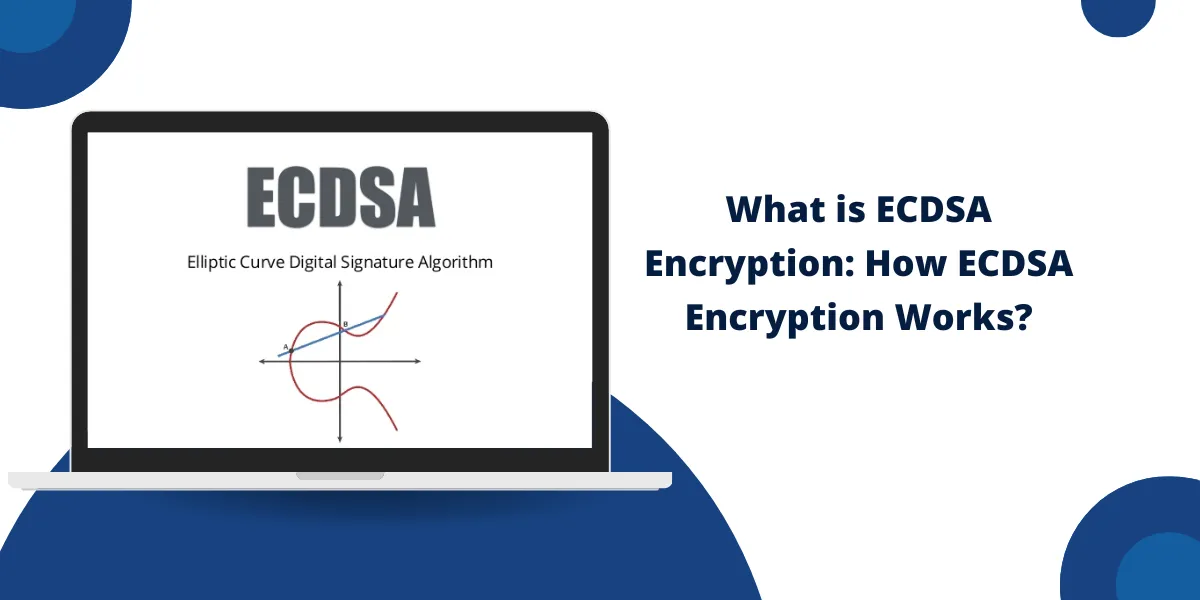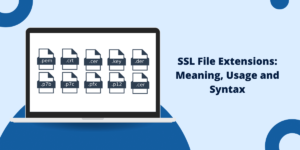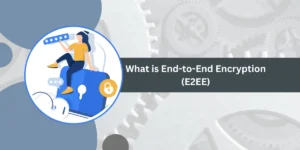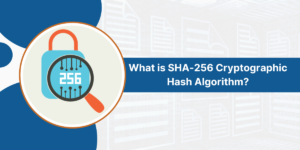What is Elliptic Curve Digital Signature Algorithm (ECDSA)?
ECDSA encryption, or the Elliptic Curve Digital Signature Algorithm, is a cryptographic algorithm used to secure communications and verify digital signatures. It allows entities to prove their identity and ensure data integrity without the need for a central authority. ECDSA encryption is based on elliptic curve cryptography and offers advantages over other algorithms like RSA in terms of security, performance, and efficiency.
Key Takeaways
- ECDSA is a digital signature scheme based on elliptic curve cryptography. It is used to generate public and private key pairs for signing and verification.
- It provides a high level of security compared to other algorithms like RSA while using smaller key sizes, reducing storage and transmission costs.
- ECDSA relies on the difficulty of solving the elliptic curve discrete logarithm problem to ensure cryptographic security.
- Key pairs in ECDSA consist of a private key for signing data and a public key for verification. The private key must be kept secret.
- ECDSA is used in Bitcoin and other blockchain technologies to secure transactions and provide proof of ownership.
- It is also widely used in applications like secure messaging, HTTPS, code signing, and hardware authentication.
- ECDSA signatures provide non-repudiation, as only the private key holder could have produced a valid signature.
How the ECDSA Algorithm Works
ECDSA makes use of elliptic curve cryptography to generate public and private key pairs. It leverages the mathematical properties of elliptic curves over finite fields to create a cryptographic system that is highly secure but requires shorter key lengths than other algorithms.
Here is an overview of how ECDSA works:
Generate Public/Private Key Pair
- An ECDSA key pair consists of a private key (a random number) and a public key (a point on the curve generated from the private key).
- A set of domain parameters is required, including the elliptic curve equation and generating point.
- The private key is randomly generated using a cryptographically secure random number generator.
- The public key is then derived from the private key by multiplying it with the generating point of the elliptic curve.
- This linking of the private and public keys ensures only the holder of the private key can generate the corresponding public key.
Create Signature
To sign a message:
- The signer calculates the hash of the message to produce a message digest.
- The message digest is converted to an integer.
- This integer is used as input to calculate the ECDSA signature, which involves scalar point multiplication on the curve using the private key.
- This produces the two components of the signature – r and s values.
- The signature containing r and s is then transmitted along with the message.
Verify Signature
To verify the signature, the receiver:
- Calculates the message digest from the received message.
- Verifies that the signature is valid by checking if r and s satisfy the verification equation using the public key.
- This confirms the signature was generated using the corresponding private key.
- If valid, the receiver is assured that the message comes from the expected sender and has not been altered.
Why Use ECDSA?
Here are some key advantages of using ECDSA encryption:
- Stronger security: ECDSA offers equivalent security to algorithms like RSA but with smaller key sizes. A 256-bit ECDSA key provides comparable protection to a 3072-bit RSA key. This greatly improves efficiency.
- Faster performance: Smaller ECDSA keys mean faster computation times for signing and verification, especially in resource-constrained devices. This makes it suitable for real-time applications.
- Smaller footprint: With smaller keys, ECDSA signatures take up less space compared to other algorithms. This reduces storage requirements and transmission overhead.
- Low power usage: ECDSA is efficient even on devices with limited CPU power, such as smartphones and IoT devices. This enables strong security on battery-powered platforms.
- Secure curve options: The security of ECDSA depends on choosing a cryptographically strong elliptic curve. Curves like secp256k1 provide 128 bits of security.
- Standardized algorithm: ECDSA is standardized by bodies like ANSI, IEEE, and FIPS, making it interoperable between different applications and systems.
Applications and Uses of ECDSA
Some major applications where ECDSA is commonly used include:
Blockchain and Cryptocurrencies
- Bitcoin: ECDSA with the secp256k1 curve is used to generate Bitcoin addresses and sign transactions. The digital signatures provide proof-of-ownership.
- Ethereum: Uses ECDSA signatures to secure Ether transactions and Ethereum Virtual Machine code validation.
- Other cryptocurrencies: ECDSA is used in altcoins like Litecoin, Ripple, Stellar Lumens, and Cardano to sign transactions.
Secure Communications
- TLS/SSL: ECDSA certificates are used in TLS to establish an encrypted HTTPS connection for web browsing.
- Secure messaging: Chat apps like Signal use ECDSA to verify users and encrypt chat messages end-to-end.
Authentication
- Code signing: Software developers digitally sign executables like mobile apps and software updates using ECDSA to prove authenticity.
- Hardware authentication: ECDSA signatures are used in FIDO protocols for passwordless login, two-factor authentication, and device attestation.
IoT Security
- Device identity: ECDSA provides a lightweight way for IoT devices to prove their identity within a network.
- Data signing: Sensor measurements and firmware updates can be ECDSA signed to ensure they are not tampered with.
- Access control: ECDSA signatures are used to authenticate users and devices to IoT hubs and gateways.
ECDSA vs RSA
While RSA is still widely used, ECDSA offers better efficiency and security overall:
- ECDSA allows shorter key lengths than RSA for equivalent security. At 128-bit security, ECDSA needs just a 256-bit key, while RSA requires a 3072-bit key.
- ECDSA signatures are computed faster than RSA signatures, especially for verification. This improves performance for real-time and high throughput systems.
- The elliptic curve discrete logarithm problem used in ECDSA is considered harder to solve than RSA’s integer factorization problem.
- However, RSA encryption is still generally faster than elliptic curve encryption schemes. So, RSA is often used along with ECDSA for encryption and signatures.
- RSA key generation is simpler than finding a secure elliptic curve and generator point for ECDSA.
- In terms of adoption, RSA is still more widely used and supported, though ECDSA usage is rapidly growing.
How to Implement ECDSA
Here are the main steps involved in implementing ECDSA encryption:
Select Elliptic Curve Parameters
- Several standard curves like secp256k1, secp384r1, and secp521r1 are available.
- Choose a cryptographically strong curve based on the required security level. A higher curve order means more security.
- The curve equation, prime modulus, order, and generator point parameters are needed.
Generate Key Pair
- Create a random private key using a CSPRNG. Length should match the curve order.
- Derive the public key by multiplying the private key with the generator point G.
- The public key is a point on the curve. Private key must bekept secret.
Implement Signature Generation
- Accept a private key and message as input. Hash the message to produce digest.
- Generate random k value from 1 to n-1 where n is the curve order.
- Calculate (x, y) = k * G, where G is the generator point.
- r = x mod n
- s = k^(-1) * (z + r * d) mod n where z is the message digest and d is the private key.
- The signature is the (r, s) pair.
Implement Signature Verification
- Accept public key, message, and signature (r, s) as input. Compute hash z.
- Verify that r and s are between 1 and n-1.
- Calculate u1 = z/s mod n and u2 = r/s mod n
- Calculate (x, y) = u1 * G + u2 * Q, where Q is the public key point.
- If r = x mod n, the signature is valid. Else, it is invalid.
Common Attacks on ECDSA
Like other cryptosystems, ECDSA implementations are also vulnerable to certain attacks if not done correctly:
- Weak curve attacks: Using a weak curve with low order enables attackers to calculate discrete logs and duplicate keys. Always use standard curves like secp256k1.
- Fault injection: Physical tampering to induce faults during ECDSA signature can leak private key info. Use hardware protections against physical attacks.
- Weak randomness: Low entropy during private key generation can result in duplicate or predictable keys that are easier to crack. Use proper random number generation like /dev/urandom.
- Side-channel attacks: By analyzing power usage, electromagnetic leaks, timing information, etc, during ECDSA operations, attackers may be able to steal keys. Minimize side channels through constant-time implementations and hardware protections.
- Invalid curve attacks: Sending incorrect parameters to force invalid curve equations can lead to bugs and exploits. Validate all inputs properly.
- Signature malleability: Without hashing, attackers can manipulate ECDSA signatures by adding points on the curve. Always hash messages before signing.
Best Practices for ECDSA Implementation
Some tips for securely implementing ECDSA include:
- Use elliptic curves standardized by NIST like secp256r1 or secp256k1 to avoid weak curve issues.
- Properly seed the random number generator and use sufficient entropy sources to create unpredictable private keys.
- Add salting and stretching mechanisms like bcrypt to strengthen private key derivation.
- Use constant-time implementations without secret-dependent branching or memory accesses.
- Enable side-channel attack mitigation in hardware through clock cycle randomization, power smoothing, etc.
- Always hash the message through a cryptographic hash like SHA256 before signing to prevent malleability issues.
- Enforce strict validation of all signatures, public keys, parameters, and boundary conditions to avoid invalid curve attacks.
- Store private keys securely in a trusted platform module or hardware security module to limit exposure.
Final Words
In summary, ECDSA is an efficient and highly secure digital signature algorithm widely adopted in blockchain, web security, IoT, and other applications. Through the mathematical properties of elliptic curves, it offers faster performance and tighter security compared to RSA. With proper implementation and key management, ECDSA signatures are an indispensable tool for proving identity and ensuring integrity in the digital world.
FAQs about ECDSA
Here are some common questions about ECDSA encryption:
What does ECDSA stand for?
ECDSA stands for Elliptic Curve Digital Signature Algorithm. It is a cryptographic algorithm based on elliptic curve cryptography used for digital signatures.
What are the key components of ECDSA?
The key components of ECDSA are:
- Private and public key pair
- Elliptic curve domain parameters like curve equation, generator point
- Cryptographic hash function
- Random number generation
How is ECDSA different from RSA?
ECDSA offers better efficiency and security than RSA. It uses smaller key sizes, provides faster signature generation/verification, and relies on harder mathematical problems for its cryptographic strength.
What are the steps involved in ECDSA signature generation?
The main steps for ECDSA signature generation are:
- Generate random integer k from 1 to n-1 where n is the curve order
- Calculate point (x, y) = k * G where G is the generator point
- r = x mod n
- s = k^(-1) * (z + r * d) mod n where z is the message hash and d is a private key
- The signature is the (r, s) pair
How does ECDSA signature verification work?
For verification, the receiver computes u1 = z/s mod n and u2 = r/s mod n. Then calculate point (x, y) = u1 * G + u2 * Q, where Q is the public key. If r = x mod n, the signature is valid.
Why is key generation important in ECDSA?
Proper, random, and secure private key generation is critical for ECDSA security. Weak random number generation can lead to compromised keys. Strong entropy sources should be used to generate unpredictable keys.
What curve is used in Bitcoin?
Bitcoin uses the secp256k1 elliptic curve for ECDSA signatures securing transactions. This provides 128 bits of security with 256-bit private keys.
How does ECDSA provide non-repudiation?
Since only the private key holder can generate valid signatures, ECDSA signatures provide non-repudiation. The signer can only accept signing a message if their signature is verified correctly with the public key.

Priya Mervana
 Verified Web Security Experts
Verified Web Security Experts
Priya Mervana is working at SSLInsights.com as a web security expert with over 10 years of experience writing about encryption, SSL certificates, and online privacy. She aims to make complex security topics easily understandable for everyday internet users.



